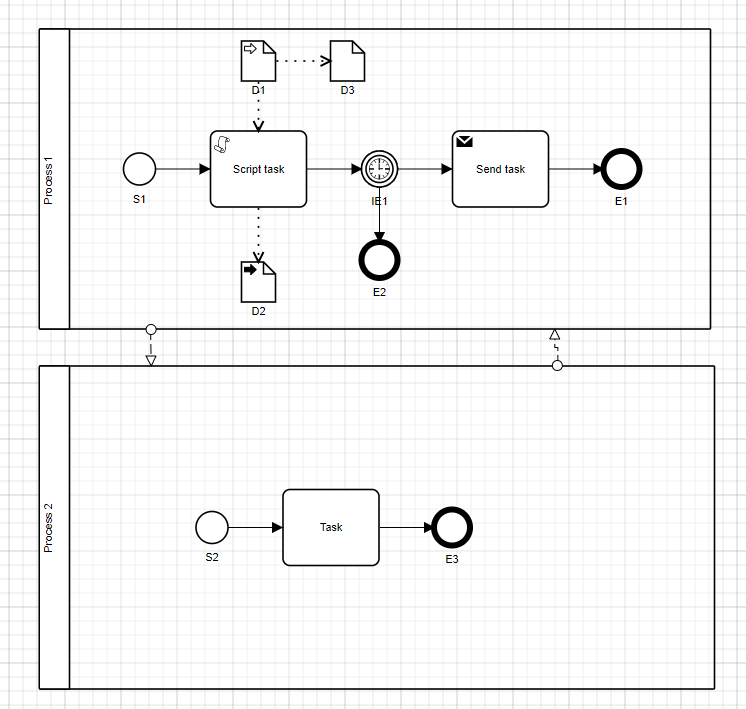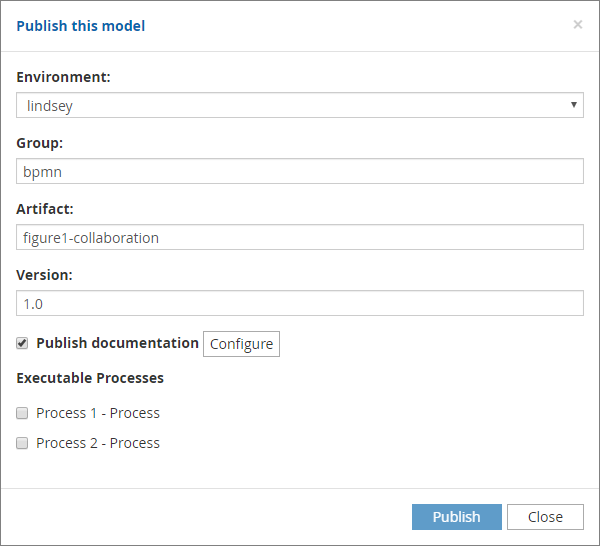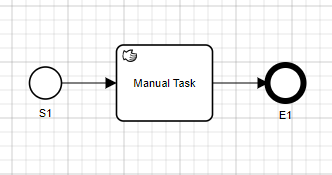Process
There is a correlation between process and what becomes a service:
-
In a process diagram, the content of the diagram becomes a service
-
In a collaboration, each pool becomes a separate service

In the example above, 2 pools have been created and each one represents a service.

In the figure above, we can see the two pools listed as processes, and the possibility to choose to publish related services.
A service generated from a process has inputs and outputs. Data inputs are exposed as input requirements for starting the service and Data Outputs are returned by the service.
In addition, a special variable called End is associated with the Data Outputs. It lists all the labels of the end events reached during the service execution.
We can then make a distinction between two kinds of processes:
-
Straight through process starts from a Start event and ends by reaching an End event. It is the simplest form of a process.
-
Long running process also starts from a start event the first time. In this configuration, during the service execution, a task creating a resume point is reached. That resume point can then be used to resume the process.

In the figure above, a manual task is included in the process flow. When becoming a service, after publishing, the service can be started and when the manual task is reached, a resume point will be created. If the resume point is not triggered, the service will not be resumed and is now considered a long-running process.